Innovative Harvesters: Transforming Agriculture Today
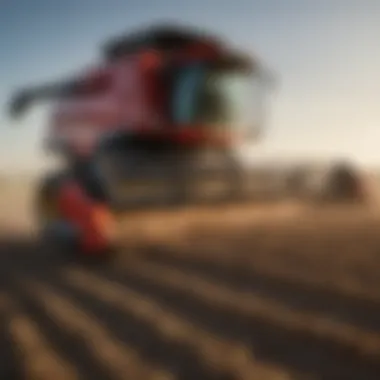
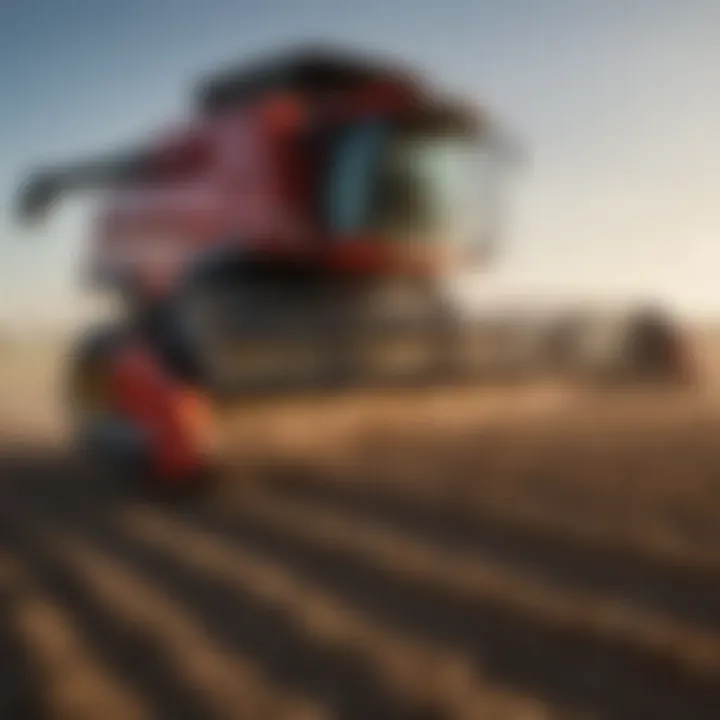
Intro
In the bustling realm of modern agriculture, harvester farm equipment stands as a testament to human ingenuity and the quest for efficiency. This equipment not only simplifies the harvesting process but also significantly boosts productivity and sustainability on farms. Understanding the intricacies of this machinery is crucial for both novice and experienced agricultural professionals. It allows users to optimize their approach towards farming and adapt to ever-evolving challenges in food production.
As we delve into the innovations and applications of harvester farm equipment, we will unravel the various types available, explore the technological advances reshaping the industry, and examine effective maintenance practices that ensure longevity and performance. The discussion aims to provide insightful guidance rooted in practical knowledge, catering specifically to the needs of agriculture farmers and enthusiasts.
Prolusion to Harvester Farm Equipment
The significance of harvester farm equipment cannot be overlooked in the context of modern agriculture. This equipment plays a critical role in maximizing farm output and efficiency. Harvesters have evolved from simple tools to complex machines, incorporating advanced technology to suit various agricultural needs. This evolution directly impacts productivity, labor management, and sustainability in farming practices.
Definition and Overview
Harvester farm equipment refers to machines specifically designed to gather mature crops from the fields. These machines include various types such as combine harvesters, forage harvesters, and specialty harvesters. Each type caters to different agricultural processes and crops. For instance, combine harvesters are used for grain crops, while forage harvesters are suited to gathering fodder for livestock.
The operation of these machines is crucial in reducing the time and labor involved in harvesting. By effectively managing crop yields, they ensure that farmers can respond to market demands swiftly and efficiently. When we talk about harvesting, we must consider the technological features integrated into modern equipment. Automation, precision features, and advanced crop management systems are some of the innovations propelling the farming industry forward.
Historical Context
The history of harvester equipment dates back to the late 19th century when manual harvesting methods dominated agricultural practices. Early mechanization began with the introduction of machines that aided in cutting and gathering crops. Over time, significant advancements in technology contributed to the development of modern harvesters.
During the 20th century, the introduction of combine harvesters marked a turning point. These machines combined several harvesting processes into one, improving efficiency and reducing labor costs. The integration of diesel engines also allowed for more powerful and reliable machines.
In recent decades, innovations have accelerated further with the onset of digital technology and automation. The current landscape showcases sophisticated harvesting equipment equipped with sensors and GPS technology. These features facilitate precision in farming, allowing farmers to optimize their practices based on collected data.
This historical analysis illustrates the transformative journey of harvester farm equipment and sets the stage for understanding its current innovations and applications. The ongoing evolution underscores the importance of adapting agricultural methods to keep pace with technological advancements, ensuring food security and efficient resource use.
Types of Harvesters
Understanding the types of harvesters is fundamental in the realm of agricultural equipment. Harvesters play a crucial role in enhancing efficiency during the harvesting process. With various types designed for specific tasks, choosing the right equipment can significantly affect yield and operational costs. Choosing the correct harvester type can mean the difference between a successful harvest and wasted resources.
Combine Harvesters
Functionality
Combine harvesters integrate multiple harvesting processes into one machine. This functionality allows for the simultaneous reaping, threshing, and winnowing of crops. The efficiency offered by combine harvesters makes it a popular option among farmers looking to maximize productivity. One key characteristic of these machines is their ability to handle large volumes of crops quickly. However, the size and cost can be a considerable detriment for smaller farms. Some combine harvesters also include advanced features such as adjustable headers for different crop types, adding to their versatility.
Applications
The applications of combine harvesters extend across various crop types, including wheat, rice, and corn. They are robust enough to process different growth stages, streamlining the entire harvesting cycle. This adaptability makes them a vital piece of equipment for modern agriculture. A unique feature of many combine harvesters is their capacity to adjust settings on-the-fly, which can optimize performance during harvest. This cuts down on operational time, though it often requires trained personnel for effective management.
Advantages
One notable advantage of combine harvesters is their ability to increase harvesting efficiency. They significantly reduce the time needed to complete the harvest compared to traditional methods. Also, by integrating several functions, they decrease the need for multiple machines, thus minimizing maintenance costs. Despite the high initial investment, farmers often find that the increased productivity offsets the cost over time. However, this investment can be a hurdle for smaller farming operations.
Forage Harvesters
Operation
Forage harvesters are specialized machines designed to cut and collect forage plants. They operate by gathering green fodder and chopping it into silage. This system is essential for livestock farmers who rely on high-quality animal feed. The specifics of forage harvester operation usually include a feed intake mechanism that ensures even cutting and collection. An interesting aspect of forage harvesters is that they often integrate multiple functions while remaining compact, making them versatile in various field sizes. However, their specialized nature means they are not suitable for every crop type.
Benefits for Livestock
The primary benefit of forage harvesters is the high-quality feed they provide to livestock. These machines help ensure that feed is cut at the optimal time for maximum nutritional value. This is crucial for maintaining livestock health and productivity. Additionally, forage harvesters are efficient in managing fields, allowing for sustainable practices in feed production. Despite their benefits, they require proper maintenance and management to keep them functioning optimally.
Usage in Crop Management
Forage harvesters also play a vital role in crop management. They allow farmers to better control growth cycles and optimize the use of land. By managing forage growth, farmers can enhance soil health and productivity over time. A unique feature of forage harvesters is their ability to apply precise cutting techniques, which can be tailored to specific crop conditions. However, the technology can be complex, necessitating training for operators to maximize effectiveness.
Specialty Harvesters
Types of Specialty Harvesters
Specialty harvesters cater to specific crops, such as fruits and vegetables. They are designed with unique mechanisms that suit the delicate nature of these crops. A significant characteristic of specialty harvesters is their ability to minimize damage during harvesting. This attribute makes them essential for maintaining quality in high-value crops. However, their specialized design can limit versatility, making them less effective for broader agricultural applications.
Crop-Specific Technologies
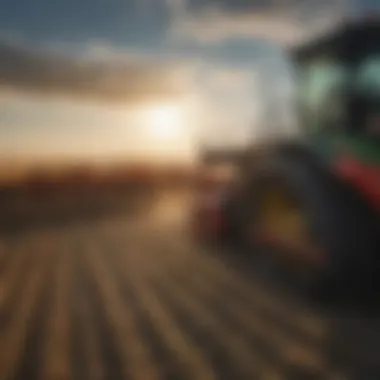
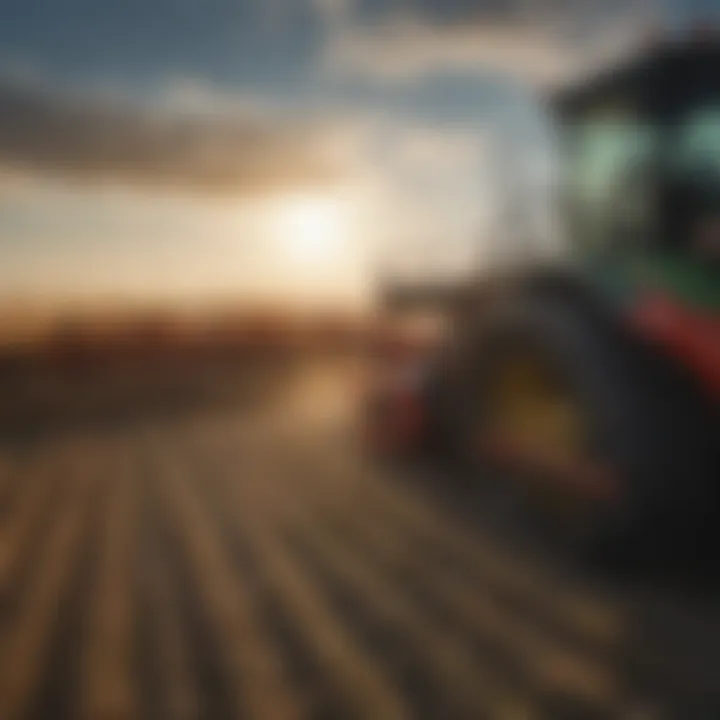
Innovations in crop-specific technologies allow specialty harvesters to be more efficient and effective. Advanced features may include sensors to gauge ripeness and adjust harvesting methods accordingly. This technology not only increases yield but also minimizes waste. However, reliance on such advanced features can lead to higher equipment costs. Understanding these technologies helps farmers make informed choices about their equipment.
Technological Advances in Harvesters
Technological advances in harvester equipment play a crucial role in enhancing agricultural productivity and efficiency. These innovations are not merely tools; they represent significant shifts in how farming operations are conducted, allowing farmers to adapt to changing market demands and environmental conditions. Understanding these advances is essential for any agricultural professional aiming to optimize operations and drive sustainability in farming practices.
Automation and Robotics
Autonomous Harvesting Systems
Autonomous harvesting systems are at the forefront of modern agricultural technology. They utilize advanced sensors, camera systems, and machine learning algorithms to operate independently in the fields. This system contributes to reducing human labor while increasing precision in harvesting. One key characteristic of autonomous harvesting systems is their ability to work continuously without fatigue, which significantly boosts productivity during peak harvesting times.
One of the unique features of these systems is their real-time data collection capabilities. They can analyze crop conditions and adjust harvesting methods on-the-fly, making them a beneficial choice for farmers who prioritize efficiency and risk management. However, the initial investment cost can be high, and farmers must consider whether the potential gains in productivity justify this expense.
Impact on Labor
The impact of automation on labor in agriculture is profound. While automation provides significant efficiency gains, it also raises concerns about job displacement for manual laborers. A key characteristic of this shift is the transformation of labor roles on farms. Workers are now required to focus on machine maintenance and data analysis rather than manual harvesting.
The unique feature of this evolution is the opportunity for farm workers to upskill and engage in more technical roles. This can lead to better job satisfaction and potentially higher wages. However, there is a disadvantage as well; not all workers may adapt to the new technological demands, leading to a gap in the workforce. The challenges and opportunities associated with labor automation must be evaluated by farmers looking to integrate these technologies.
Precision Agriculture
Integration with GPS
Integration with GPS technology has revolutionized how farmers approach planting and harvesting. This technology enables farmers to map their fields with high precision. By knowing the exact position within a field, farmers can optimize their harvesting patterns for maximum efficiency. This is particularly beneficial in large and complex agricultural settings where every square foot matters.
A critical characteristic of GPS integration is its ability to facilitate variable rate harvesting. This means that farmers can adjust their harvest strategies based on the specific conditions within different parts of a field. Although GPS technology enhances efficiency, the requirement for technology investment and data management skills can present challenges for some farmers.
Data Analysis for Yield Improvement
Data analysis for yield improvement is another area where technological advances make a significant impact. By collecting and analyzing data from various sources, including weather patterns and soil conditions, farmers can make informed decisions about their harvesting practices. This aspect contributes to optimizing yield and reducing waste.
The key characteristic that makes data analysis a popular choice among farmers is its predictive capacity. Through analytics, farmers can foresee trends and adjust their strategies accordingly. A distinct advantage is the ability to personalize farming practices to the unique conditions of each field, ensuring that resources are used effectively. However, reliance on data can lead to obstacles, especially for those without access to the required technology or expertise.
The integration of automations and data analysis in harvesting is reshaping the agricultural landscape, driving both efficiency and sustainability in farming.
Key Features of Modern Harvesters
Understanding the key features of modern harvesters is crucial for today's agricultural practices. These machines not only enhance productivity but also contribute to sustainable farming methods. Harvesters have grown increasingly sophisticated, integrating advanced technologies that optimize performance and minimize waste. This section delves into both cutting techniques and grain handling systems, focusing on their significance within the context of modern farming operations.
Cutting Techniques
Different Cutting Mechanisms
Various cutting mechanisms exist in modern harvesters, each designed for specific tasks and conditions. Popular types include the rotary cutter, sickle bar, and draper headers. The rotary cutter is prominent for its ability to handle stalky crops, while the sickle bar is effective in standing crops with less dense growth.
The main benefit of these mechanisms is their ability to minimize crop damage during harvesting. For instance, the draper header provides a smooth transition of the harvested material, thus reducing shattering losses. Additionally, while sickle bars are generally less expensive, rotary cutters offer a higher speed of operation, which is an important consideration for large-scale farms. Therefore, choosing the right cutting mechanism is vital for maximizing harvest efficiency and minimizing operational costs.
Efficiency Comparisons
Evaluating the efficiency of different cutting techniques is essential for farmers. Efficiency can dictate yield outcomes and overall profitability. When comparing the rotary cutter and sickle bar, one notes that rotary cutters tend to have a higher throughput. This means they can process more crops in a shorter time.
Furthermore, fuel efficiency is a crucial aspect of this comparison. Harvesters equipped with advanced cutting mechanisms often use less fuel relative to their output. However, these may come with a higher initial investment. Therefore, farmers must weigh these factors against their individual operational needs to find a balance between upfront costs and long-term gains.
Grain Handling Systems
Storage Solutions
Effective storage solutions are fundamental to maintaining grain quality post-harvest. Modern harvesters are crafted with advanced systems that facilitate seamless transfer of grain into storage bins. Storage facilities can include silos or containers that protect grains from moisture and pests.
An innovative aspect of storage systems is their integration with moisture sensors. These sensors help farmers ensure ideal storage conditions are maintained. However, selecting appropriate storage solutions can be complex. Farmers must consider factors such as capacity, durability, and local climate. Thus, choosing the right equipment can safeguard against significant losses in grain quality and quantity.
Transportation Methods
Transportation methods directly influence the efficiency of grain movement from farms to markets. Modern harvesters often integrate loading augers or conveyor belts which streamline the process. These mechanisms allow for quicker unloading of grain, reducing wait times and improving workflow efficiency.
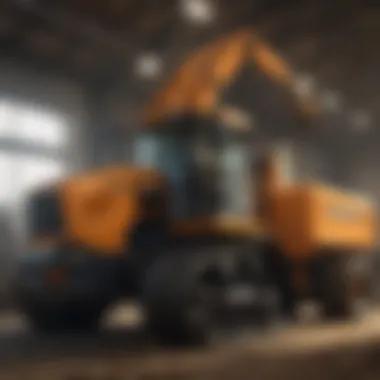
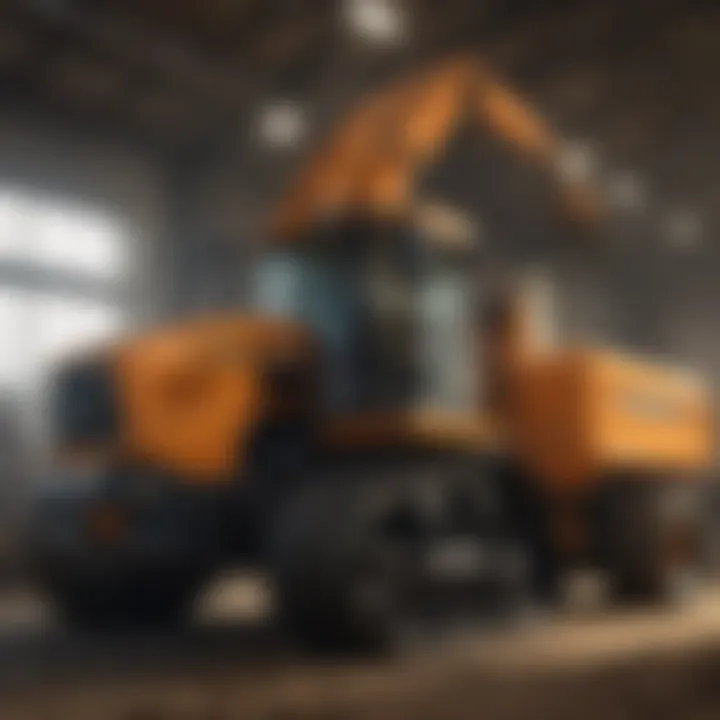
Moreover, farmers benefit from transport systems designed to simplify loading into trailers or trucks. However, it is essential to consider the compatibility of these systems with existing transport equipment. Investing in suitable transportation methods can ensure a swift transition from field to market, thus enhancing overall operational effectiveness.
Effective cutting and grain handling systems enhance both yield and sustainability for modern farms. Understanding these features allows farmers to make informed decisions.
Maintenance Practices for Harvesters
Maintenance practices for harvesters are a critical aspect of ensuring their longevity and efficiency. Regular upkeep not only enhances the performance of this vital equipment but also minimizes unexpected breakdowns during peak harvesting seasons. An ounce of prevention can translate into significant cost savings in repairs and yield losses, making it essential for farmers to invest time and resources into proper maintenance routines.
Routine Inspections
Routine inspections of harvesters form the backbone of effective maintenance. This practice involves a systematic check of all major components, including the engine, hydraulic systems, and cutting mechanisms. Farmers should develop a checklist that includes the following elements:
- Engine fluids: Check oil levels and coolant. Refill or replace as necessary.
- Belts and hoses: Look for cracks or wear that might lead to failure.
- Fuels systems: Ensure filters are clean and fuel lines are intact.
- Safety equipment: Confirm that safety shields and working lights function correctly.
Doing these inspections regularly—ideally before and after the harvesting season—helps catch potential issues early. It allows easy replacements and adjustments, maintaining optimal performance when it is critical.
Common Repairs
Common repairs are often born out of neglecting routine inspections or the rigors of heavy use. Some prevalent issues that arise include:
- Worn blades: Dull blades can lead to inefficient cutting, which may affect yield quality.
- Hydraulic failures: Hydraulic issues can arise due to leaks or pressure loss, rendering the machine less functional.
- Electrical faults: Problems with wiring or sensors can hinder machine operation.
Addressing these issues promptly is crucial. Not only does it reduce downtime, but it often costs less in the long run compared to waiting for a total failure. Farmers should have access to well-stocked parts or trusted suppliers who provide timely parts for repairs.
Seasonal Preparation
Seasonal preparation is the final step in a comprehensive maintenance strategy. This process involves several activities that ensure harvesters are ready before the beginning of the harvesting season. The steps may include:
- Thorough cleaning: Remove debris and buildup from the previous season, preventing rust and corrosion.
- Fluid changes: Replace oil, hydraulic fluid, and other essential fluids to keep machinery running smoothly.
- Calibration: Adjust cutting heights and check for proper operation of sensors and controls.
Taking these steps can significantly reduce the risk of issues arising when the fieldwork starts. Allocating time at the start and end of the season ensures harvesters operate efficiently, thus enhancing overall productivity.
"Investing in proper maintenance practices not only extends the life of your equipment but also enhances operational efficiency and yields."
In summary, maintenance practices are key for any farmer relying on harvester equipment. Regular inspections, being aware of common repairs, and seasonal preparations can lead to remarkable improvements in the efficiency of farm operations. These elements together create a robust framework that sustains agricultural productivity.
Environmental Impact of Harvesting
The environmental impact of harvesting is evolving under the pressing concerns surrounding agricultural sustainability. This section delves into how harvesting affects soil health, air quality, and overall ecosystem balance. By focusing on sustainable practices, farmers can enhance crop yield while protecting environmental integrity. Furthermore, it emphasizes the necessity of transitioning towards eco-friendlier techniques that not only maintain but also improve agricultural ground for future use.
Sustainable Practices
Reducing Soil Compaction
Reducing soil compaction is a critical element of sustainable agricultural practices. Soil compaction happens during harvest, particularly when heavy machinery moves across fields. This leads to less aeration in the soil, which negatively influences root health and nutrient uptake. Its main contribution to the broader goal of sustainability is that it helps maintain the soil structure, which is essential for the growth of crops.
Key characteristic of this practice is its ability to preserve soil integrity while reducing the need for chemical fertilizers, which is beneficial for holistic farm management. One unique feature of reducing soil compaction is the implementation of lighter machinery. This approach has several advantages, such as improved soil moisture retention and increased microbial activity in the soil. On the downside, the initial investment in lighter equipment may deter some farmers, especially those working with limited budgets.
Minimizing Residue Burning
Minimizing residue burning is another prominent sustainable practice in harvesting operations. Often, farmers will burn crop residues to clear fields quickly. This method has short-term conveniences but considerably contributes to air pollution and loss of soil nutrients. By shifting away from burning, farmers enhance soil fertility rather than deplete it. This technique is seen as a popular choice because it can cultivate healthier soil, leading to more robust crops in the long run. A unique aspect of minimizing residue burning is the practice of using mulch or cover crops, effectively recycling leftover plant material into the soil. The advantage here is twofold: it reduces emissions and enhances soil organic matter, improving overall soil health. A disadvantage might be the initial adaptation period for farmers unaccustomed to alternative practices, but the long-term benefits often outweigh these challenges.
Carbon Footprint Considerations
Understanding carbon footprint considerations is essential for modern harvesters. As the agricultural sector looks to reduce its environmental impact, evaluating the carbon output of harvesting machinery gains importance. Every piece of equipment used during harvesting can add carbon emissions to the atmosphere. Therefore, considering fuel-efficient machines or those that run on alternative energy sources can significantly reduce the overall carbon footprint of farms. Additionally, tracking emissions provides insights into areas for improvement. By adopting measures to assess and minimize their emissions, farmers can play a crucial role in combating climate change while striving for productive results. Ultimately, integrating these considerations into harvesting practices can lead to a more resilient and sustainable agricultural landscape.
Economic Aspects of Harvester Equipment
In the realm of agriculture, understanding the economic aspects of harvester equipment is crucial. This section delves into the costs involved, potential benefits, and financing options that farmers must consider when investing in harvesting machinery. Having a firm grasp of these factors aids in maximizing productivity and ensuring sustainability.
Cost-Benefit Analysis
Initial Investment vs. Long-Term Savings
The initial investment required for acquiring harvester equipment can be substantial. However, these costs must be viewed in the context of long-term savings. While some farmers may hesitate due to the high upfront expense, it is important to recognize the potential for cost recovery over time through enhanced efficiency and yield.
Investing in advanced harvester technology, such as combine harvesters, often leads to significant operational savings. The efficient use of resources translates to less fuel consumption, which ultimately lowers operating costs. Moreover, modern equipment tends to reduce labor costs through automation, allowing workers to focus on other value-added activities on the farm.


A key characteristic of considering initial investment vs. long-term savings is the rapid depreciation of older models compared to newer machines. Ultimately, the unique feature of investments in cutting-edge equipment lies in their improved capabilities, leading to higher output per acre. Investing wisely can yield more significant returns than merely opting for the cheapest available option.
Impact on Yield
The impact on yield is a critical aspect of any economic analysis regarding harvester equipment. Modern harvesters are designed to optimize crop collection and can work under various environmental conditions. These advancements mean that operators can harvest more within the same timeframe compared to older, less efficient models.
The key characteristic of higher yield possibilities often translates into increased profitability for farmers. A focus on yield ensures that production levels can meet market demands, thus stabilizing prices and revenue streams.
New technology in harvesters can include better threshing mechanisms, which reduce crop loss during harvesting. The unique feature of this enhanced yield is seen particularly in challenging farming conditions where traditional machinery would not perform as well. Hence, ensuring higher yields can effectively counterbalance some of the initial investment costs.
Financing Options
Leasing vs. Buying
When considering financing options, farmers often face a decision between leasing and buying harvester equipment. Leasing allows access to new machinery without a large capital outlay. This approach can be advantageous for farms with fluctuating income, as it provides flexibility in resource allocation.
On the other hand, buying capital equipment can lead to long-term asset accumulation. The key characteristic of this choice lies in ownership, which offers freedom from lease agreements and the potential for resale value in the future. Weighing the benefits against the risks is crucial. Leasing might involve continuous payments without ownership benefits, while purchasing requires substantial upfront capital but offers the opportunity for long-term savings.
Loans and Grants
Another financial avenue available to farmers interested in harvester equipment includes loans and grants. Agricultural loans can often be tailored to fit the specific needs of a farm operation. This adaptability can contribute significantly to securing the required funding for high-efficiency equipment.
Grants, on the other hand, provide non-repayable funds that can help improve farm operations without adding to debt. The key characteristic of this financial support is its potential to reduce initial barriers to entry for advanced technology. While loans create a debt obligation, grants can lead to more favorable financial positions.
Understanding the economic aspects of harvester equipment is not merely about costs; it also encompasses strategic decisions that impact long-term viability and productivity.
Through careful evaluation of initial investments, impacts on yield, and available financing options, farmers can make informed decisions that align with their operational goals. This ultimately cultivates a thriving agricultural enterprise.
Future Trends in Harvester Technology
The landscape of the agricultural sector is undergoing profound changes, driven by technological advancements. Focusing on future trends in harvester technology highlights the potential for improved efficiency, sustainability, and profitability of farming operations. As the global demand for food continues to rise, innovation in harvesting methods has become crucial. The exploration of emerging technologies like Artificial Intelligence (AI) and Blockchain indicates a significant shift that can reshape operational practices. Furthermore, understanding legislative and policy changes is vital in shaping how these technologies are implemented.
Emerging Technologies
AI in Harvesting
Artificial Intelligence is increasingly applied in agriculture, particularly in harvesting. AI algorithms can analyze vast amounts of data, optimizing harvest timing and techniques. This technology offers a predictive approach, allowing for better decision-making in the field. The key characteristic of AI in harvesting is its ability to learn from various data inputs, improving efficiency over time. It is a beneficial approach because it supports precision in farming, leading to higher crop yields with reduced resource consumption.
A unique feature of AI is its capacity for real-time adjustments. For instance, AI systems can monitor weather conditions and soil health, adapting harvesting strategies accordingly. The advantages include maximizing productivity and minimizing wastage. However, challenges such as high initial costs and the need for technical expertise may hinder widespread adoption.
Blockchain for Supply Chain Management
Blockchain technology has the potential to transform supply chain management in agriculture. It provides a decentralized and transparent way of tracking products from farm to market. This technology enhances traceability, ensuring that every step in the harvesting and distribution process is recorded. The key feature of Blockchain is its immutability, meaning once data is added, it cannot be altered or deleted. This characteristic makes it a popular choice for increasing accountability in food supply chains.
The application of Blockchain can significantly improve product safety and quality. By offering transparency, consumers can make informed decisions about what they buy. Additionally, it can reduce fraud within the supply chain. On the other hand, challenges include the complexity of implementation and the need for industry-wide cooperation.
Legislative and Policy Changes
Impact on Equipment Standards
Legislative changes profoundly impact equipment standards within the farming industry. Regulations set forth by government bodies dictate the safety and environmental requirements for harvesting machinery. The key characteristic is that these standards ensure the equipment used is safe for both operators and the environment. Such regulations are beneficial as they promote the use of sustainable technologies and practices.
A unique aspect of equipment standards is the implementation of advanced safety measures. These measures can mitigate risks associated with machine operation. However, strict standards may also increase costs for manufacturers, impacting affordability for farmers.
Influence of Environmental Regulations
Environmental regulations shape how farming practices evolve, specifically in harvesting. These regulations aim to minimize the ecological footprint of agricultural operations. A key characteristic is that they often promote sustainable practices, such as reducing emissions and protecting soil health. This is beneficial in addressing climate change, ensuring that farming can be viable long-term.
The impact of these regulations can be significant. They may encourage farmers to adopt new technologies that align with environmental goals. Monitoring compliance can be resource-intensive, which may pose challenges. Balancing regulatory demands with operational feasibility remains a critical consideration for the industry.
Closure
The topic of harvester farm equipment is crucial in understanding the evolution and future of agriculture. As farming practices modernize, the role of harvesters becomes more significant. They not only improve efficiency but also minimize labor-intensive tasks. Advanced harvesters are designed to handle various crops, adapting to the diverse needs of farms today.
Summary of Key Points
The examination of harvester equipment covers several key points:
- Diverse Types: There are various types of harvesters, like combine, forage, and specialty harvesters, each serving unique functions.
- Technological Innovations: Advances in automation, robotics, and precision agriculture have transformed how harvesting is conducted.
- Maintenance Practices: Regular inspections and repairs are essential for safe and efficient operations of harvesters.
- Environmental Considerations: Sustainable practices reduce the negative impacts on ecosystems, emphasizing the need for responsible farming.
- Economic Factors: Understanding costs and financing options is vital for farmers in making informed investment choices.
- Future Trends: Emerging technologies, along with changes in legislation, will affect the industry moving forward.
Final Thoughts on the Future of Harvester Equipment
The future of harvester equipment looks promising with a strong focus on technological advancements. Innovations like AI and blockchain show potential to streamline operations and promote transparency in the supply chain. Furthermore, environmental regulations are likely to play a significant role in shaping the standards for equipment. Farmers need to remain informed and adaptable to these changes to ensure that their harvesting methods not only meet current needs but also anticipate future demands. The landscape of agriculture will continue to evolve, and embracing these developments will become essential for all stakeholders in the agricultural sector.



